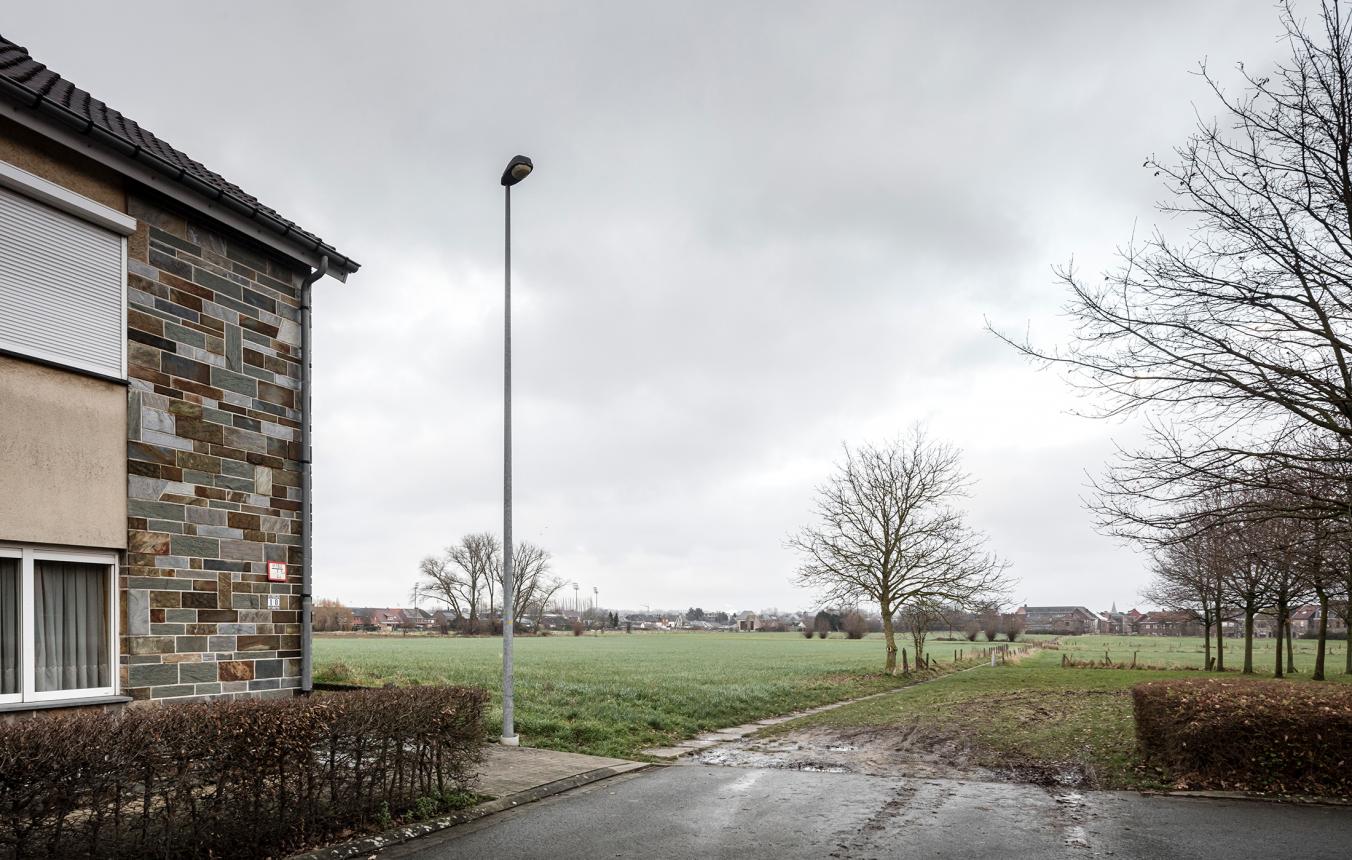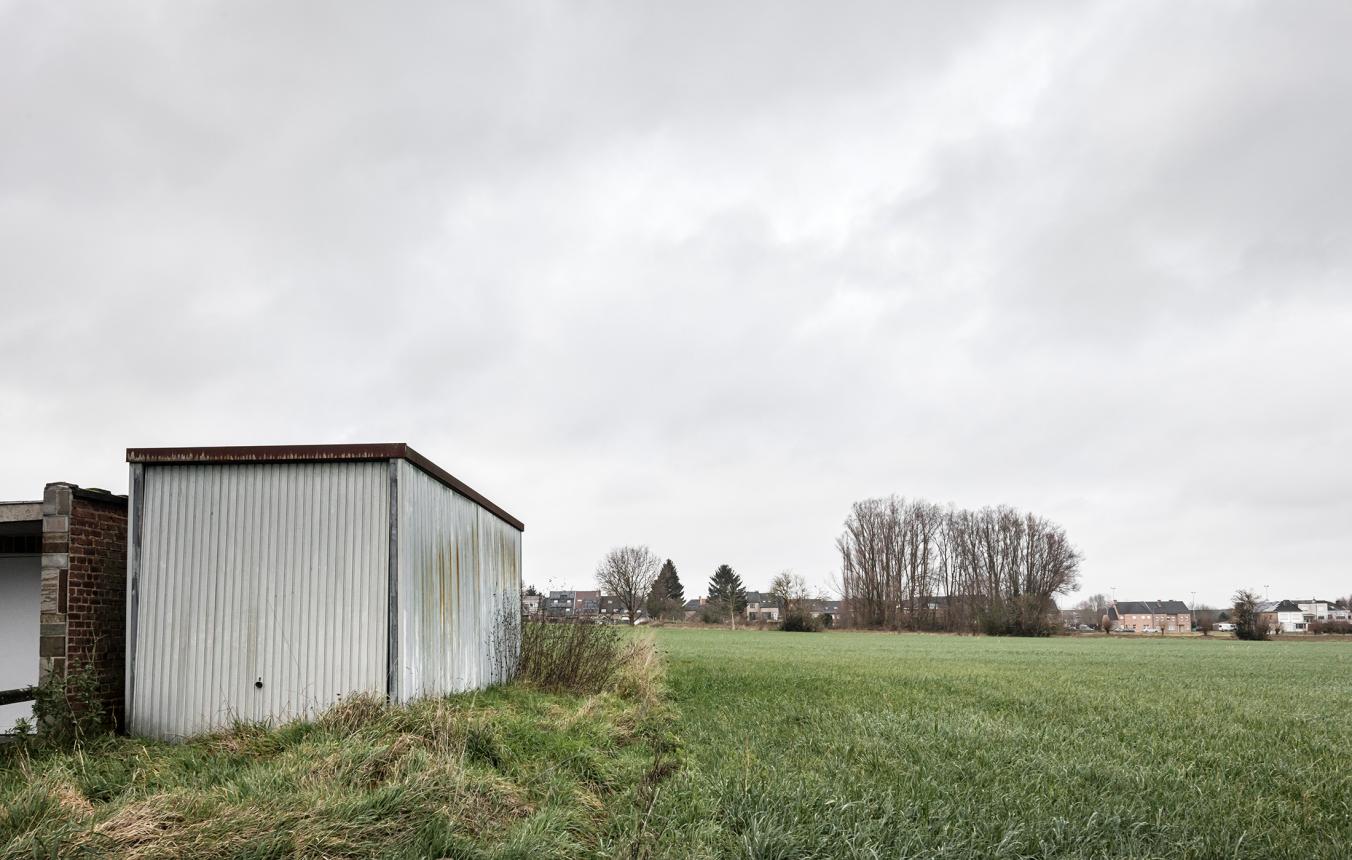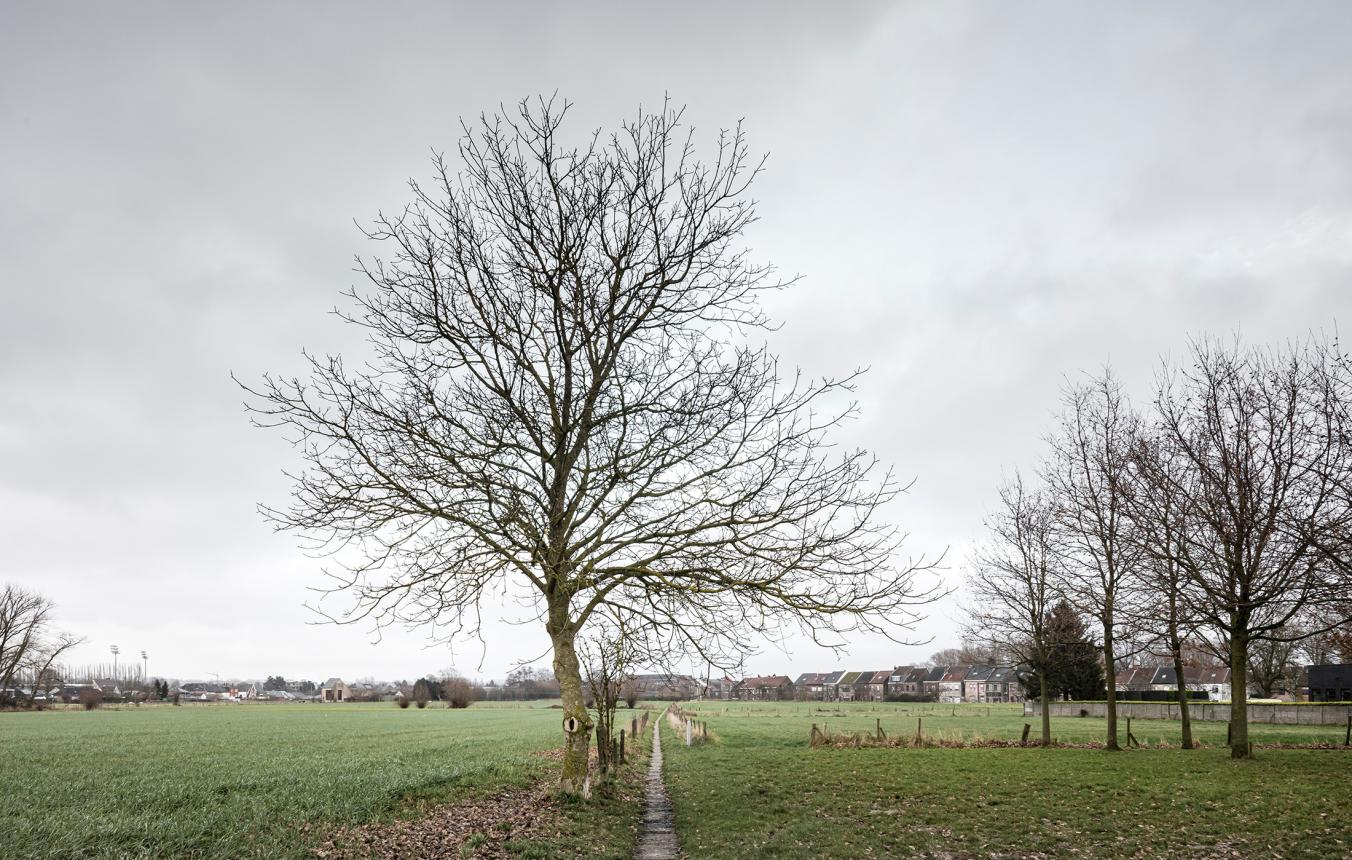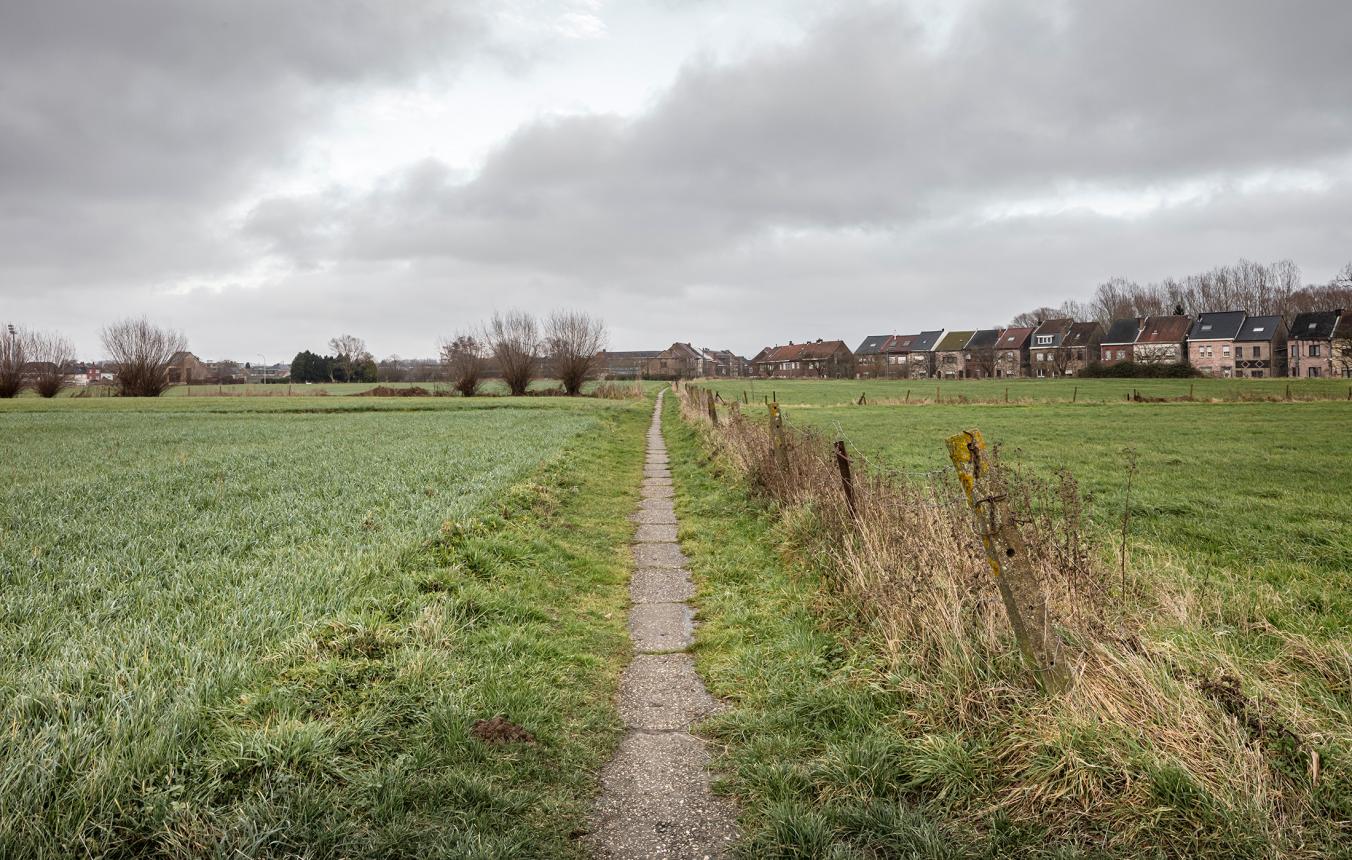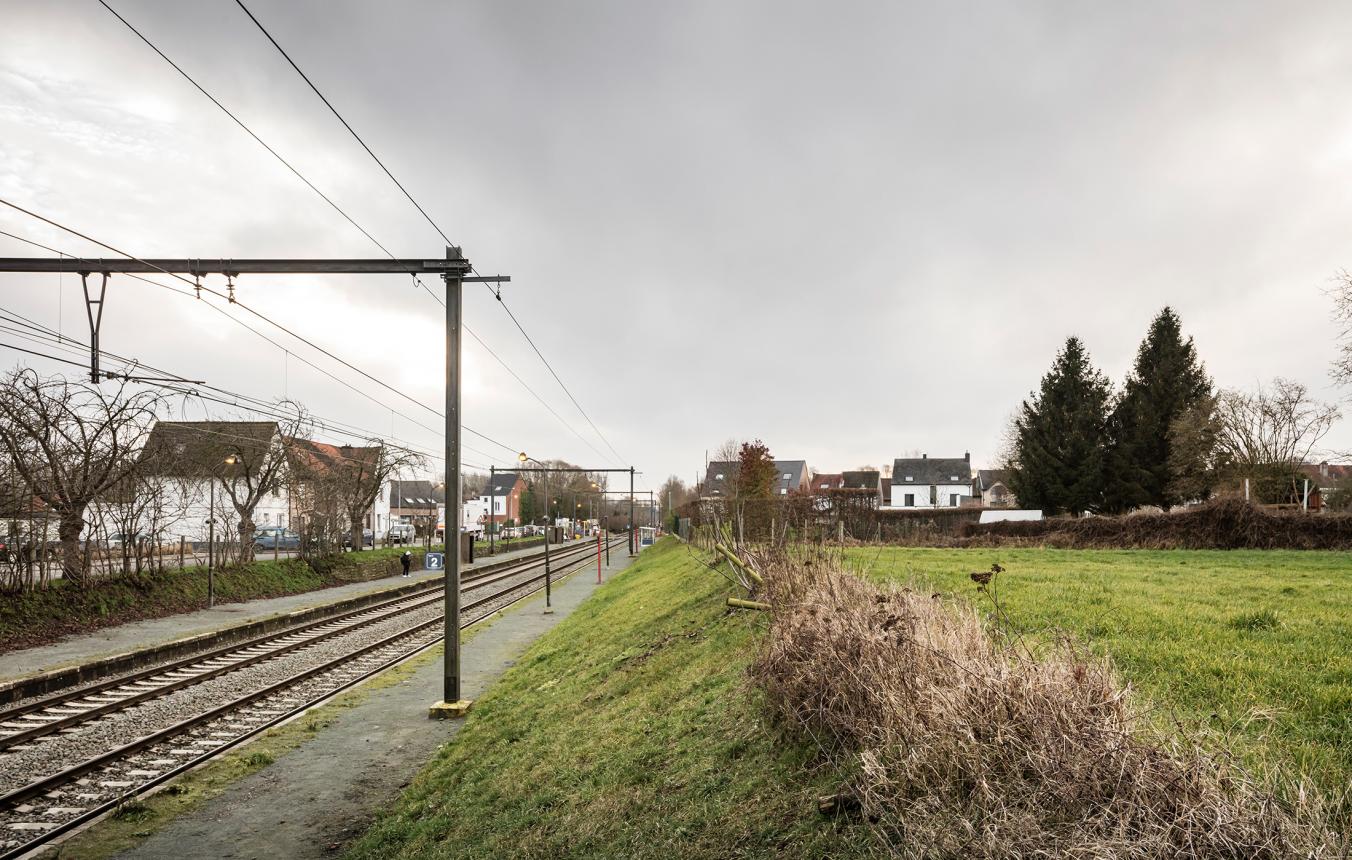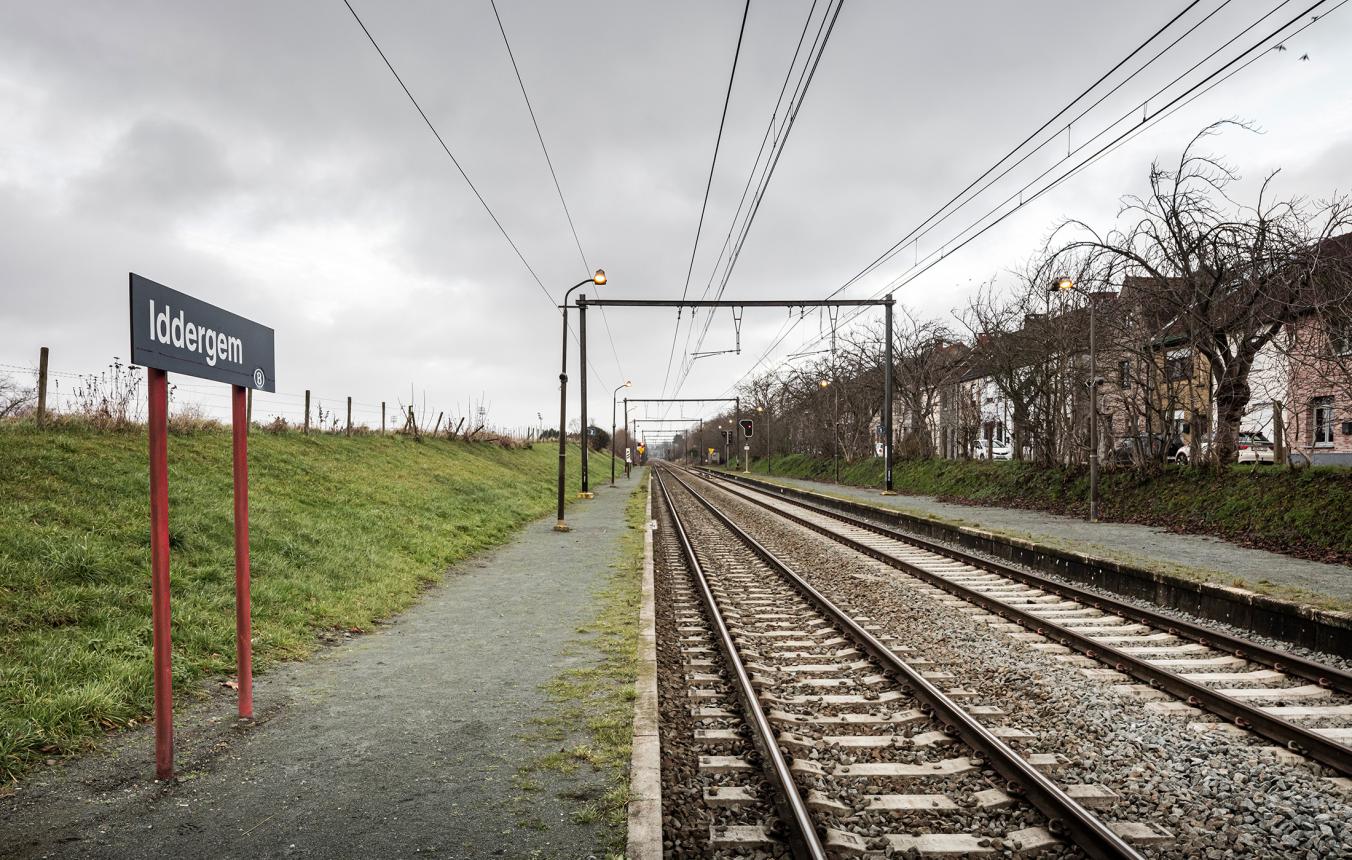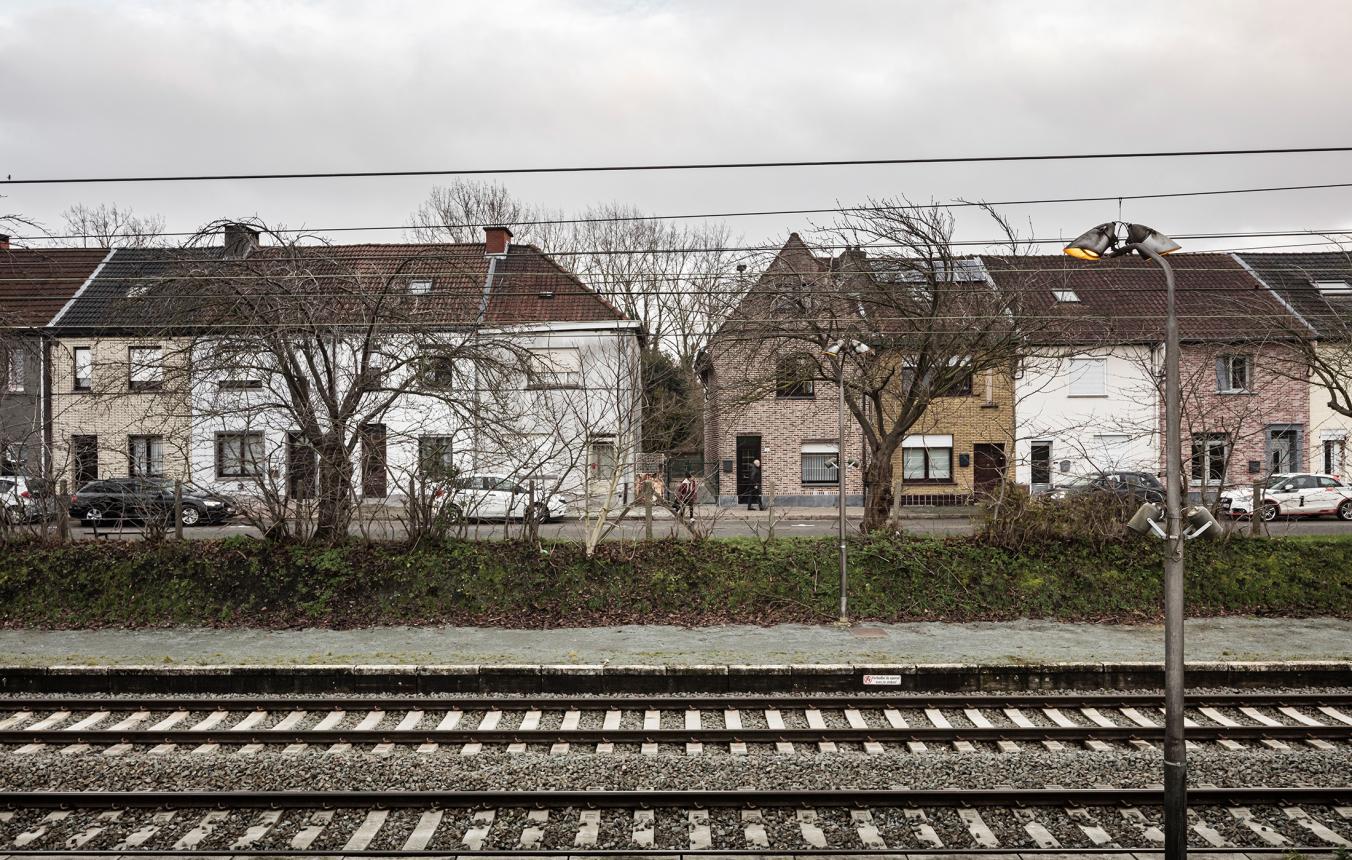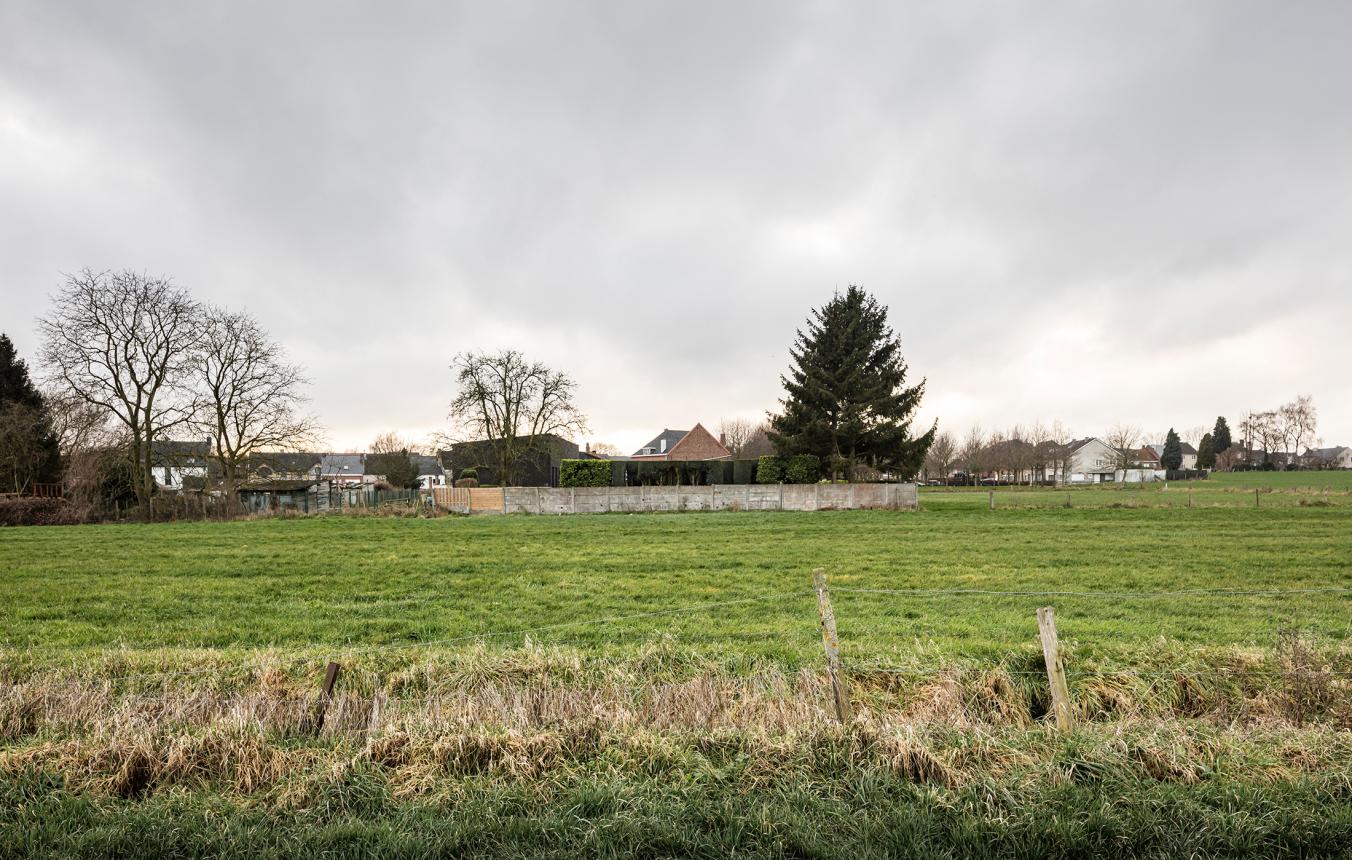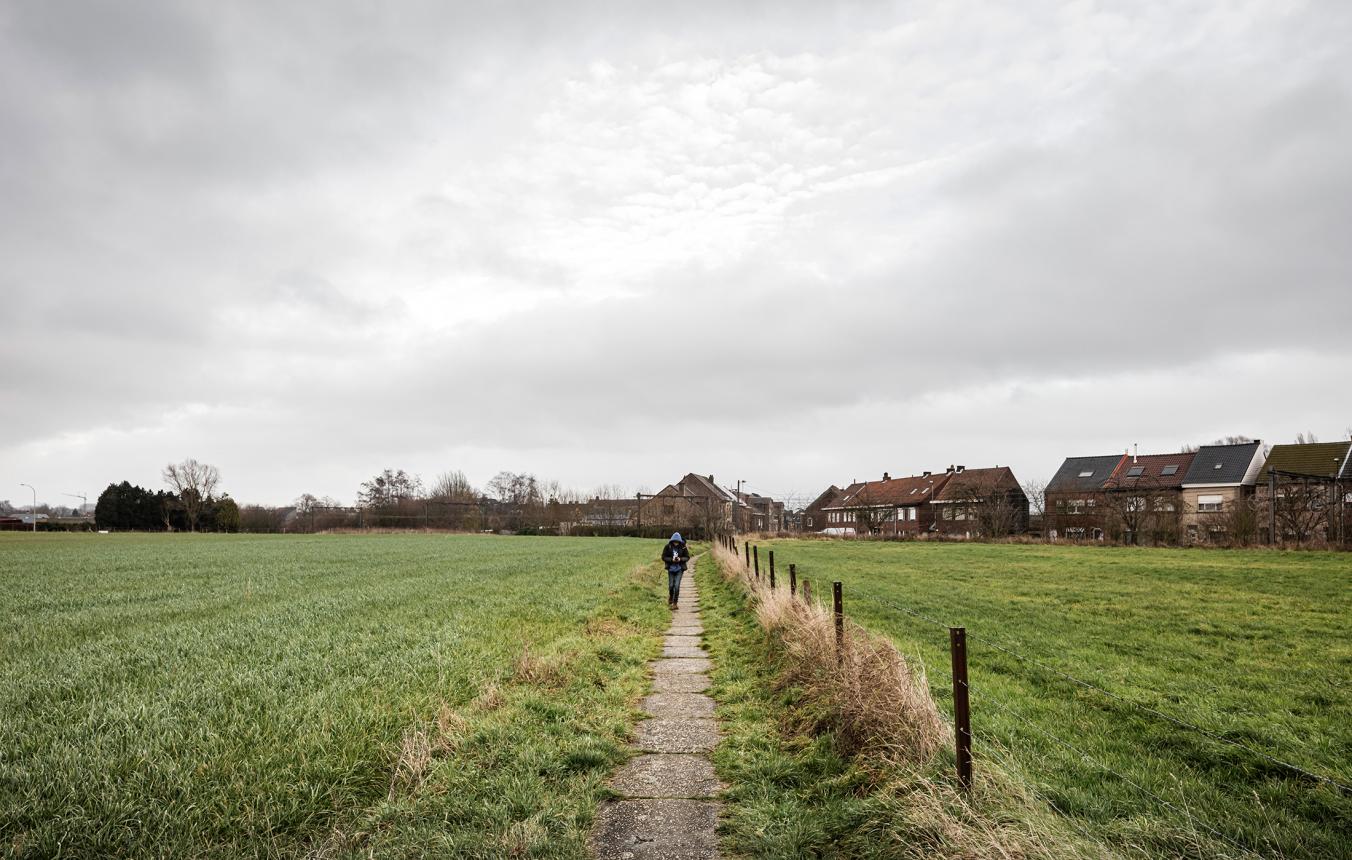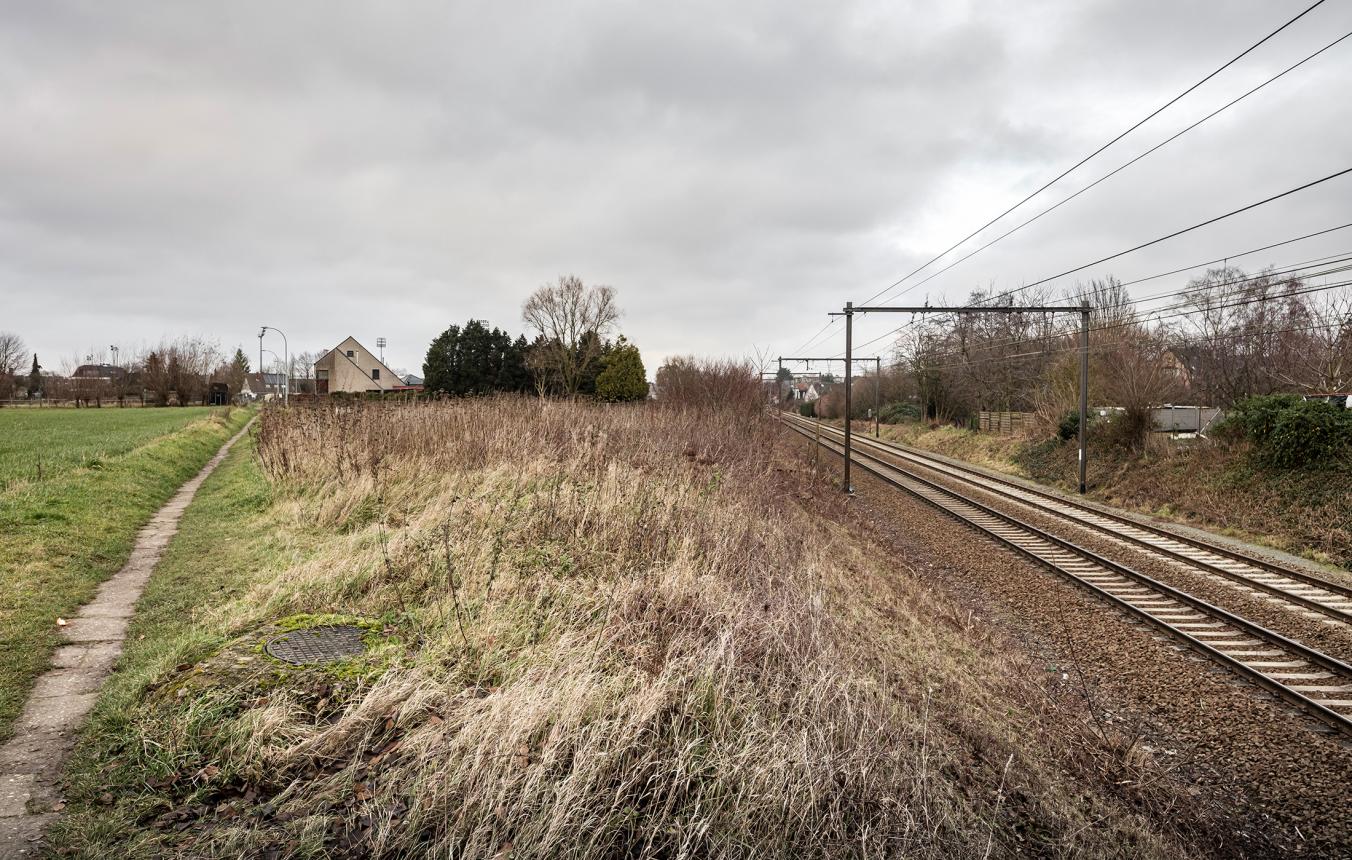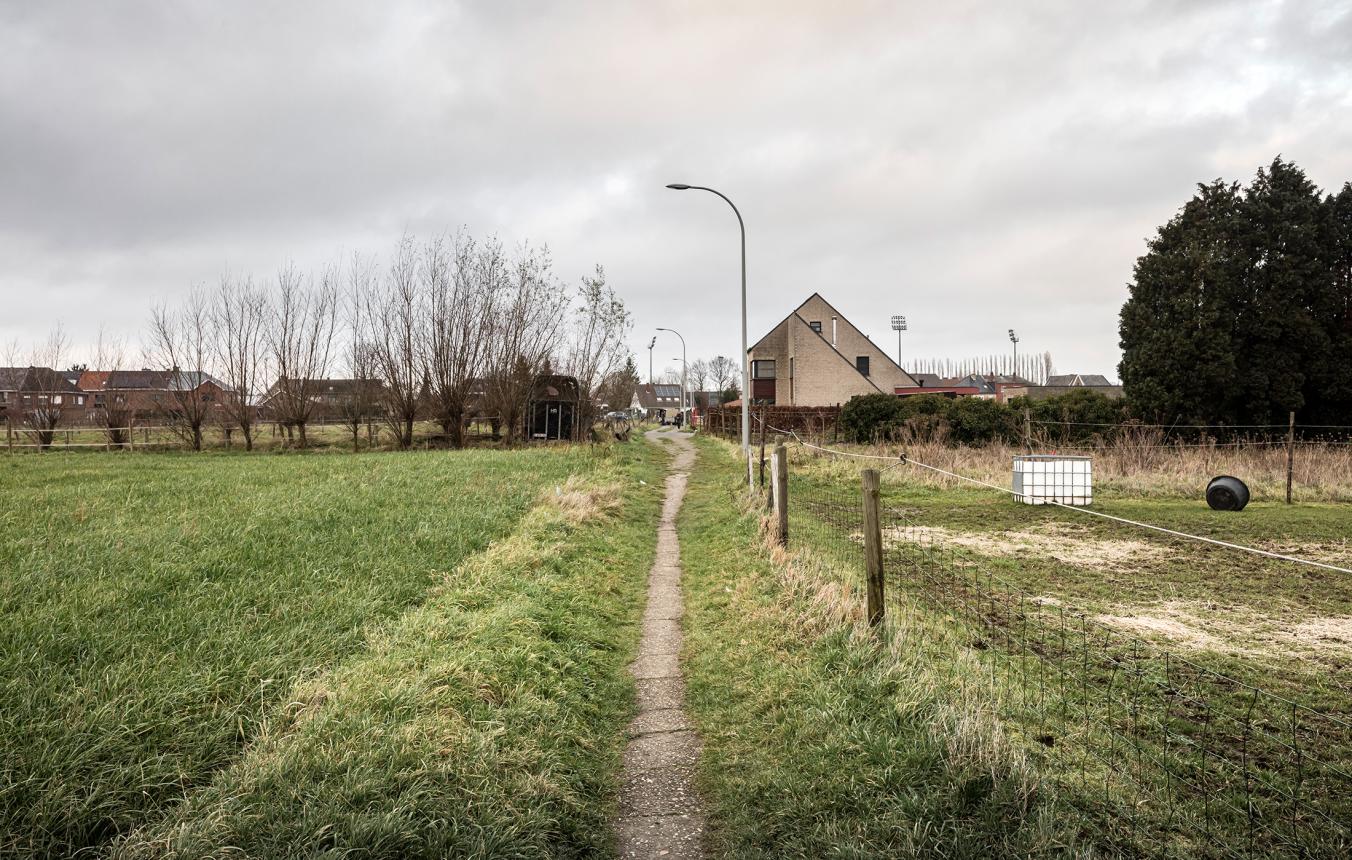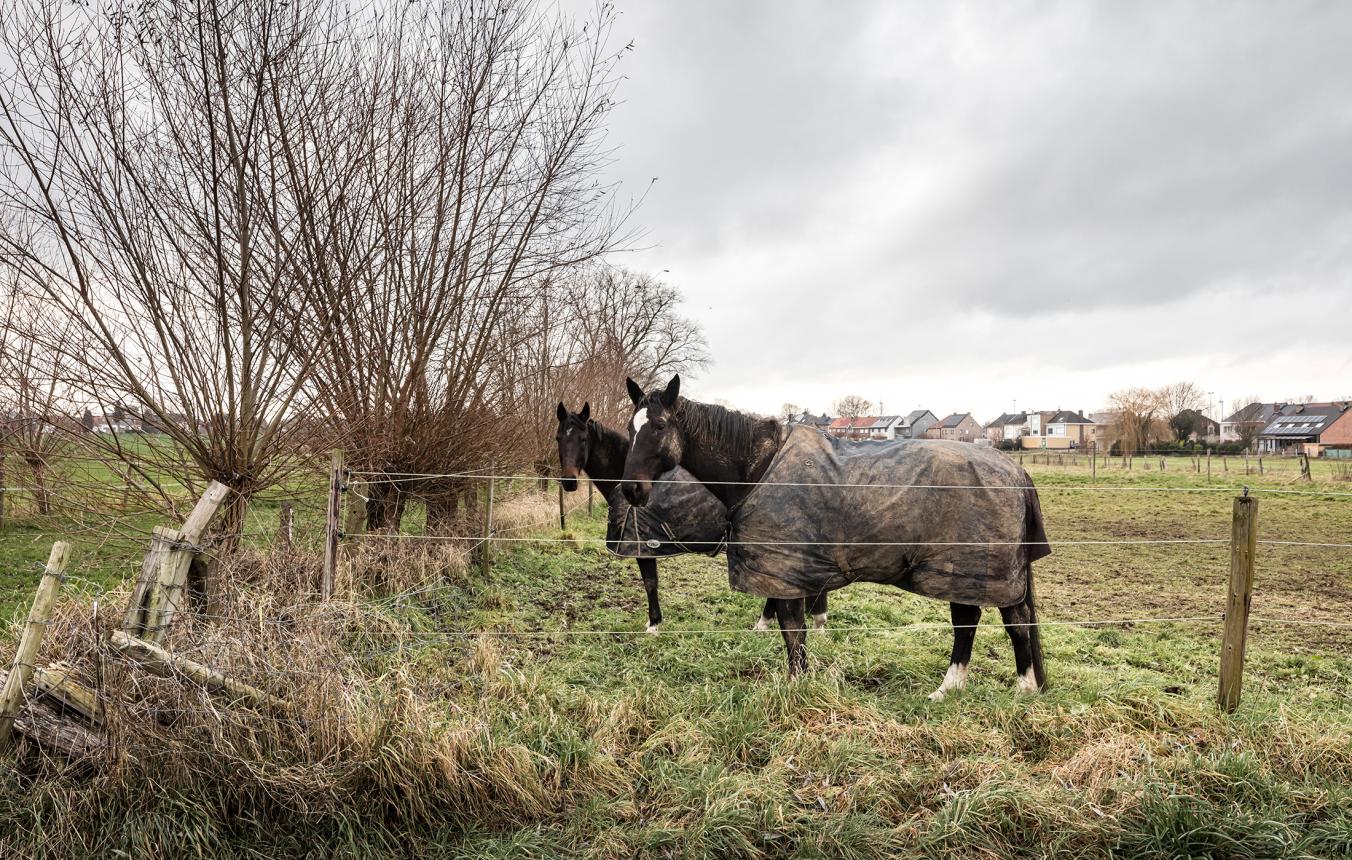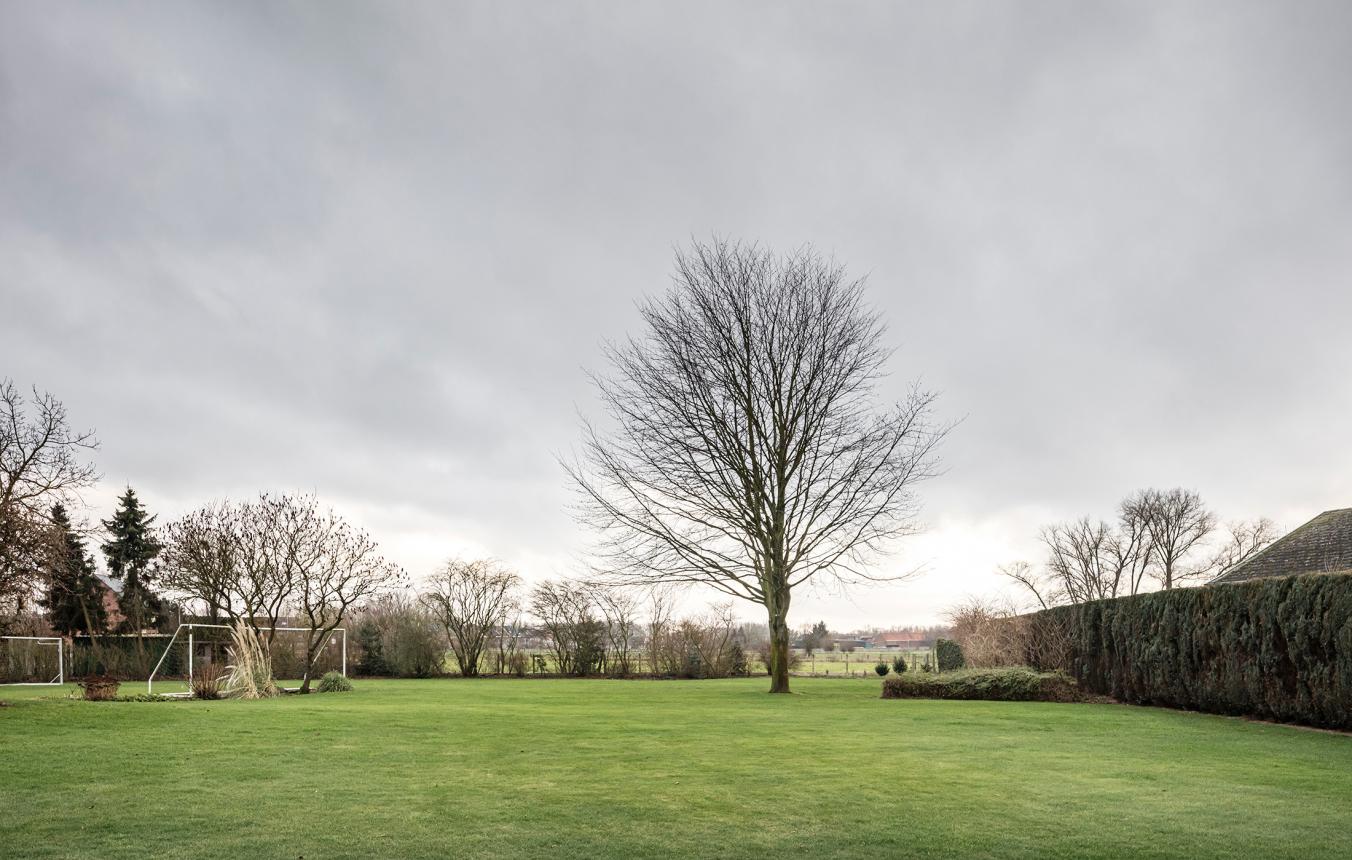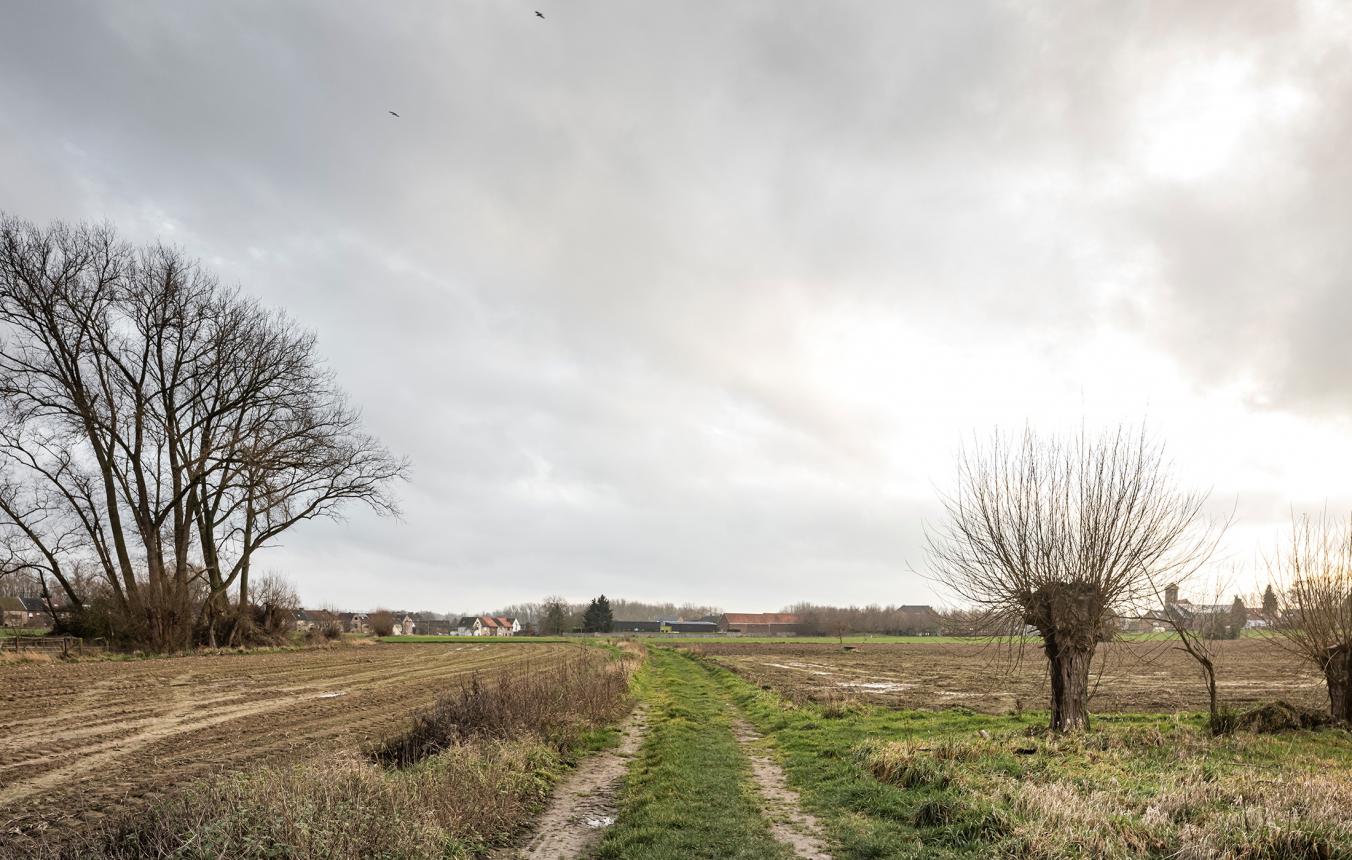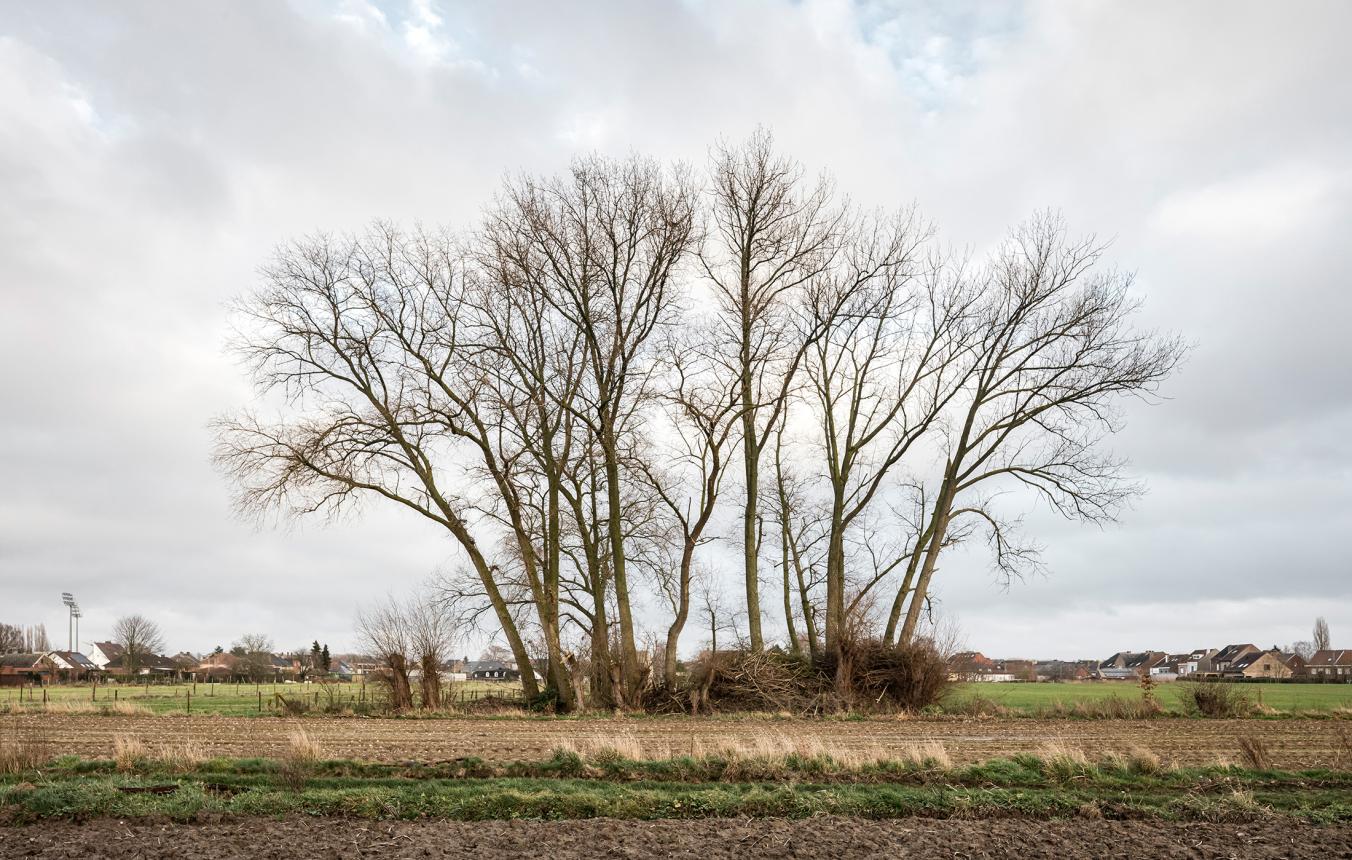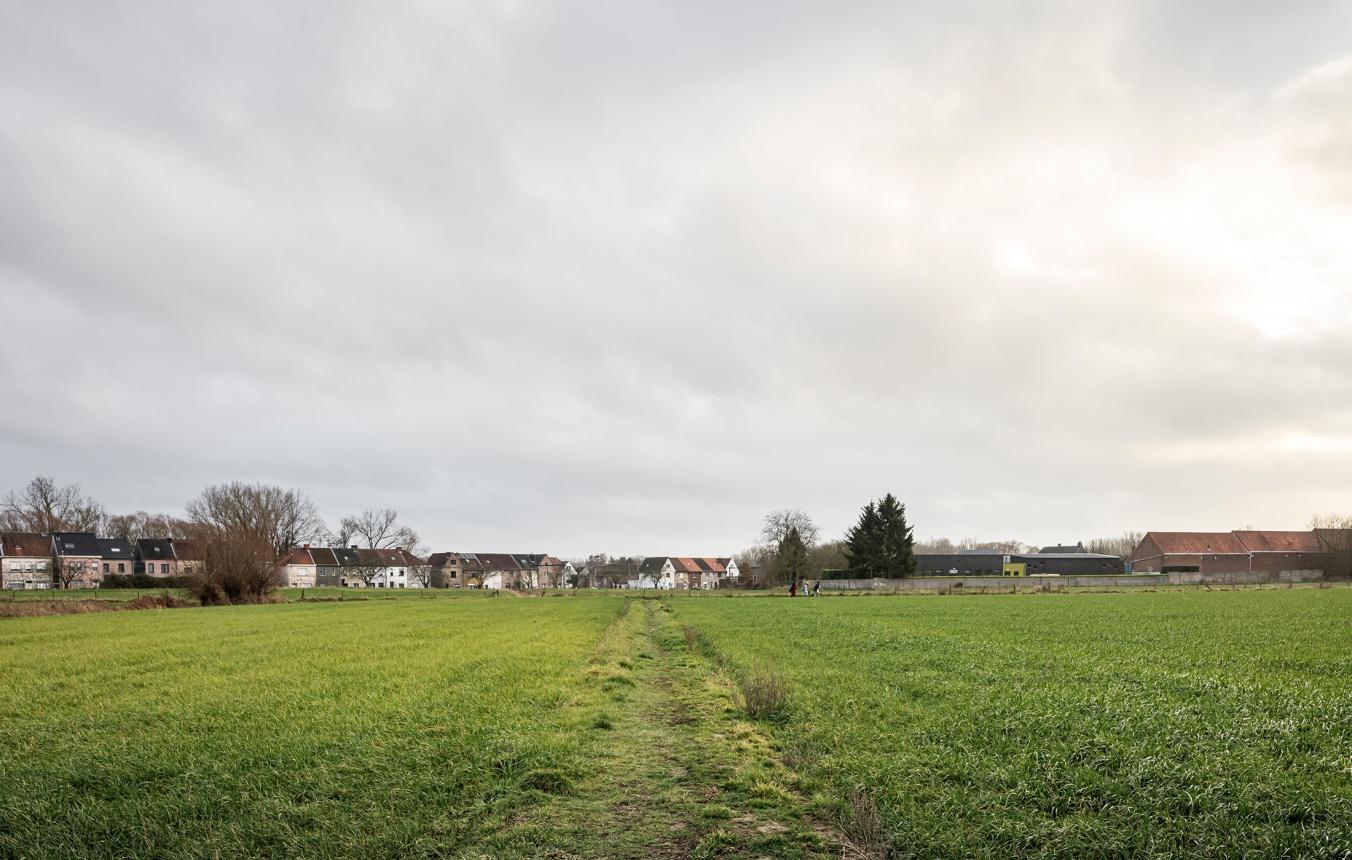Project description
The intermunicipal agency SOLVA and the municipality of Denderleeuw are looking for a strong design team to draw up a master plan and development strategy for Wolfsgracht. The main challenge of this assignment is to reconcile the development of a housing assignment while preserving the still intact landscape characteristics of this project area.
Context
Denderleeuw has seen a spectacular increase in population in recent decades. This is mainly due to its strategic location: after Gent-Sint-Pieters, Denderleeuw has the busiest train station in East Flanders. With trains running every 15 minutes, you can be in Brussels-South in a quarter of an hour, making Denderleeuw a satellite municipality of our capital.
Owing to its high junction value, the municipality, with 1,477 inhabitants/km², has, by Flemish standards, an urban housing density, but also associated problems such as a lack of quality and affordable housing. At the same time, Denderleeuw still has an – indeed excessive – village-like character. There is a high level of land occupation that occupies almost half of the territory. A lack of green public space weighs on the quality of housing and life.
However, the vast supply of public transport and the proximity of many services such as schools, shops and healthcare facilities make Denderleeuw an excellent location in which to increase the spatial efficiency qualitatively and sustainably.
The site
With the development of Wolfsgracht, an area of 13 ha, the municipality of Denderleeuw and the intermunicipal agency SOLVA want to break with the municipality’s traditional allotment history. The site is strategically located at 1.5 kilometres from the railway station and in the immediate vicinity of daily amenities and sports and leisure facilities. Wolfsgracht’s main asset is its scenic value. It is a fantastic open landscape that can take on an important role as green space in the surrounding residential fabric. SOLVA and the municipality are convinced that the development of the Wolfsgracht area can be linked to the current spatial challenges for Denderleeuw.
The assignment
The assignment consists in drawing up a master plan and a development strategy for Wolfsgracht. This master plan must fit in a broader development vision, which can steer the general improvement of the quality of the living and residential environment in Denderleeuw. This broader vision must synthesize a series of existing master plans and studies – such as the master plan for the bi-pole centre-station environment – and bring them together in a convincing vision for the future. On the basis of this broad vision, the master plan for Wolfsgracht can be given concrete form and serve as an example for future spatial developments. After all, an all-embracing spatial vision of a sustainable green-blue intertwining is needed to determine what role Wolfsgracht can play in this in concrete terms. The importance of a robust green-blue network that functions as the backbone for sustainable transport – such as a functional and leisure cycling network – is an important point of attention.
In Wolfsgracht the principal wants to focus primarily on qualitative rather than quantitative residential development. Innovative forms of housing are aimed at maximizing the area’s scenic and natural possibilities. The still intact small-scale landscape with unpaved roads, meadows and copses offers possibilities that transcend the level of the site and therefore special attention must be paid to the experiential value of this open space in the heavily urbanized environment. The project’s social added value also translates into an adapted mix of neighbourhood-supporting functions within the project area, should such a need be perceived. The aim is to achieve acceptable densities that go hand in hand with the preservation of the open space and the construction of a climate-resistant living environment with attention for multiple and collective use.
The municipal SIP (spatial implementation plan) that was drawn up for the site at the time stands in the way of such a vision. The design team should therefore not take this into account. The Wolfsgracht master plan will form the basis for the creation of a new SIP that legally anchors the urban-development vision. The drafting of this execution plan does not form part of the assignment.
In drawing up this master plan, the principal wishes to focus on high-quality urban-planning management that creates the necessary preconditions for a high architectural and landscape quality in the execution. The designer of this study might therefore also be assigned an assignment as supervisor to ensure that the principles of the master plan are given the best possible spatial translation. As far as the execution is concerned, the principal reserves the right not to award this to the design team.
The plan must be exemplary for the entire environment, in terms of both urban development and sustainability. Green structures, open spaces and blue networks must help to steer the further development of the municipality. They also provide the backbone for more sustainable mobility. Wolfsgracht can generate a leverage effect and accelerate Denderleeuw’s desired spatial transition.
The final master plan must also be translated into a feasible development strategy. The design team is expected to provide advice on how to obtain financial added value, for instance through a PPP, a sale, the granting of a leasehold or residence permits, the establishment of a cooperative company, etc. In any case, the development strategy must be combined with a realistic, economic valorization of the investments already made.
The objective is to award the realization of the works on the surroundings as an extension of this study assignment to the design team. In this way, the principles set out in the master plan can be put into practice.
In order to take advantage of all opportunities, the principal is looking for an innovative and motivated interdisciplinary team of spatial planner(s), architect(s), mobility specialists, landscape architects. The design team must translate the high ambition into creative research by design and bridge the gap between urban development, landscape architecture, mobility, public space and architecture.
Selection criteria
- the general design-based expertise with regard to the project assignment;
- the professional competence;
- the relevant experience.
Allocation criteria
- The quality of the concept and vision development and of the research by design, tested against the ambitions and expectations of the principal as formulated in the specifications.
1.1 In a broad social context
1.2 Applied more functionally to the practical needs of the user - The approach to sustainability (the extent to which the selected interventions contribute to an efficient and future-oriented use of the available space)
- The proposed phasing and the approach plan for the operationalization.
- The process-orientation and process-readiness.
- The composition and expertise of the design team.
The weighting of the respective allocation criteria is as follows: 4/3/2/1/1. The weighting of the subcriteria is 1.
Denderleeuw OO3905
All-inclusive study assignment for the preparation of a master plan and a development strategy for the Wolfsgracht area in Denderleeuw
Project status
- Project description
- Award
- Realization
Selected agencies
- agmen, Studio Thomas Willemse
- ABCD, Fallow BV, Michaël Stas
- Architectenbureau Bart Dehaene, MAARCH
- BUUR Bureau voor Urbanisme, Dhooge & Meganck - Ingenieur Architecten
- Office Ou
Location
Lindestraat,
9470 Denderleeuw
Wolfsgracht project area delimited by Lindestraat, Wijngaardstraat – Landuitstraat, railway
Timing project
- Selection: 30 Apr 2020
Client
verwijderen - Intergemeentelijk samenwerkingsverband voor streekontwikkeling SOLVA
contact Client
Nathalie Steenhaut
Contactperson TVB
Hedwig Truyts
Procedure
Competitive procedure with negotiation
Fee
€60,000 for the master plan (excl. VAT)
Awards designers
10,000 € (excl. VAT) per candidate, 5 candidates

